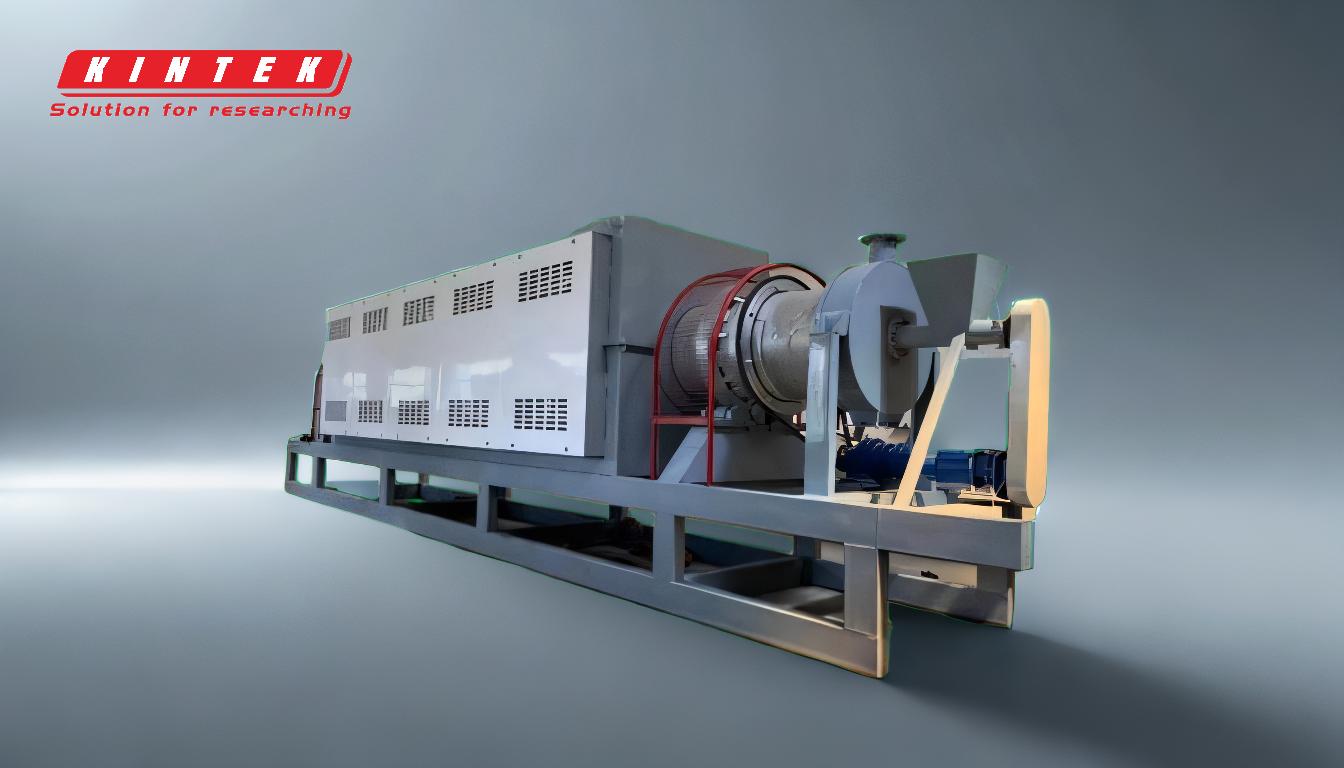The cost of a pyrolysis unit varies significantly depending on factors such as scale, technology, feedstock type, and operational requirements. Small-scale pyrolysis equipment can start as low as $30,500, while larger, continuous pyrolysis machines can cost upwards of $688,900. For example, a pyrolysis installation converting dried sludge into bio-oil with a capacity of 2 t/h requires an initial investment of €1,450,000, including infrastructure and purification systems, with annual operational costs of €961,000. These costs can be offset by revenue from selling by-products like bio-oil and energy. Additionally, feedstock availability, local policies, and plant scale play a critical role in determining the overall economic viability of pyrolysis units.
Key Points Explained:

-
Cost Range of Pyrolysis Units:
- Small-Scale Units: Prices start as low as $30,500 for basic biomass pyrolysis plants. These units are energy-efficient and often use recycled combustible gas as fuel, reducing operational costs.
- Mid-Range Units: Small-scale pyrolysis equipment can cost around $67,000, making it accessible for businesses entering the pyrolysis industry.
- Large-Scale Continuous Units: Prices for continuous pyrolysis machines begin at $688,900, with costs increasing for higher-capacity systems.
-
Factors Influencing Costs:
- Scale: Larger capacity units generally cost more than smaller ones due to increased material and engineering requirements.
- Technology: Advanced technologies, such as continuous pyrolysis systems, come with higher upfront costs but may offer better efficiency and output.
- Feedstock Type: The cost of feedstock (e.g., dried sludge, biomass) and its pre-treatment requirements can significantly impact overall expenses.
- Infrastructure and Purification: Additional costs include infrastructure setup (e.g., €200,000) and fume gas purification systems (e.g., €250,000).
-
Operational Costs and Revenue Potential:
- Annual Operational Costs: For a 2 t/h pyrolysis plant, annual operational costs can reach €961,000. These costs include maintenance, labor, and energy consumption.
- Revenue Streams: Profits from selling bio-oil, heat, and energy can offset operational expenses. For example, bio-oil production costs range from 75 to 300 EUR per ton, depending on feedstock and plant scale.
-
Economic Viability:
- Feedstock Availability: Areas with reliable and low-cost feedstock sources are ideal for pyrolysis plants, as feedstock costs can range from 0 to 100 EUR per ton.
- Local Policies: Restrictive landfill policies and incentives to reduce fossil carbon use can enhance the economic feasibility of pyrolysis projects.
- Mobile Units: Smaller, mobile pyrolysis units are attractive for regions with dispersed feedstock sources, offering flexibility and lower initial investment.
-
Examples of Cost Breakdown:
- A pyrolysis installation with a 2 t/h capacity requires:
- €1,000,000 for the main installation.
- €250,000 for a fume gas purifier.
- €200,000 for infrastructure.
- Total investment: €1,450,000.
- Annual operational costs: €961,000, offset by revenue from by-products.
- A pyrolysis installation with a 2 t/h capacity requires:
In summary, the cost of a pyrolysis unit depends on its scale, technology, and operational context. Small-scale units are affordable for startups, while larger systems require significant investment but offer higher revenue potential. Feedstock availability, local policies, and infrastructure needs further influence the overall economics of pyrolysis projects.
Summary Table:
| Aspect | Details |
|---|---|
| Cost Range | - Small-scale: $30,500+ - Mid-range: $67,000+ - Large-scale: $688,900+ |
| Factors Influencing Cost | - Scale - Technology - Feedstock type - Infrastructure & purification |
| Operational Costs | - €961,000 annually for 2 t/h plant - Offset by bio-oil & energy revenue |
| Economic Viability | - Feedstock availability - Local policies - Mobile unit flexibility |
| Example Cost Breakdown | - Main installation: €1,000,000 - Purifier: €250,000 - Infrastructure: €200,000 |
Ready to invest in a pyrolysis unit? Contact us today to find the best solution for your project!










